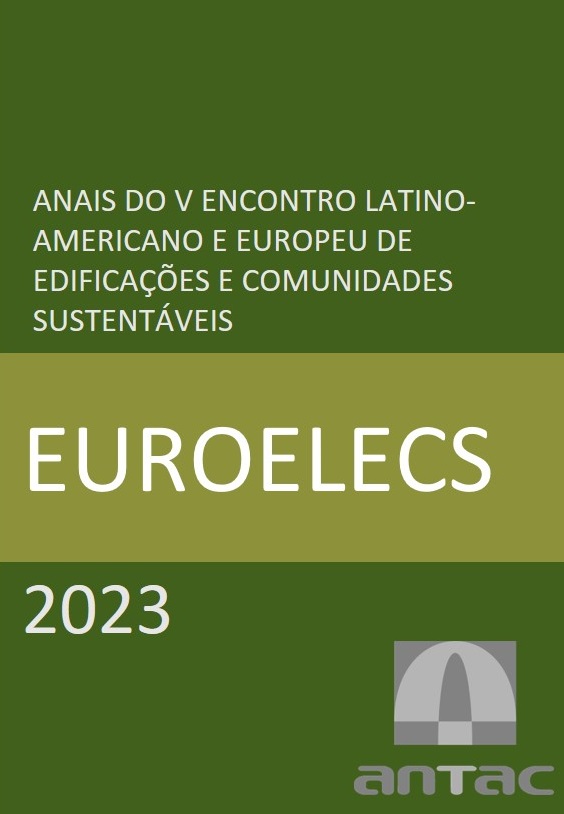VEGETABLE COVERAGE IN THE URBAN PERIPHERY
REFLECTIONS FROM JOÃO PESSOA-PB
Keywords:
vegetal cover, landscape unit, urban afforestation, urban peripheryAbstract
The urban periphery consists of a strategic area in promoting the environmental quality of the city, either because it is generally located close to areas of environmental relevance, or because it is a space that has not yet been completely altered by urban occupation. Located in the peri-urban area of João Pessoa, a city in the Northeast of Brazil, the neighborhood of Gramame contemplates these aspects and has undergone intense changes due to the housing production carried out in recent years. Given this context, this article aims to characterize the vegetation cover present in that area, in order to contribute to the debate about the planning of urban occupation in peripheral areas. For that, the following methodological procedures were used: a) bibliographical research, in order to conceptually understand how the vegetation cover is characterized; b) field research, to identify the landscape units in the study area; c) mapping of the green cover found; and d) determination of the Vegetation Coverage Index and the Vegetation Coverage Index per Inhabitant by landscape units. Mapping was carried out using geoprocessing and remote sensing techniques, using the QGIS 3.22 Software, in addition to demographic census data. It was found that, although the neighborhood still has 70% of its area covered by vegetation, its landscape units have a heterogeneous structure, highlighting the scarcity of such elements in sectors with predominant urban occupation and their direct relationship with the built typologies. In view of this, there is a need to discuss and think about new land occupation strategies for multi-floor residential buildings, considering the relationship between the building project and the vegetation cover, in order to guarantee the conservation and/or promotion of areas green and permeable and avoid situations such as those found in Gramame.
References
Cavalheiro, F.; Nucci, J.C; Guzzo, P.; Rocha, Y.T. (1999). Proposição de terminologia para o verde urbano. Boletim Informativo da SBAU (Sociedade Brasileira de Arborização Urbana), ano VII, n. 3, Rio de Janeiro, p. 7.
Cavalheiro, F.; Del Picchia, P. C. D. (1992). Áreas verdes: conceitos, objetivos e diretrizes para o planejamento. In. 1º Congresso Brasileiro Sobre Arborização Urbana e 4° Encontro Nacional Sobre Arborização Urbana. 1992. Anais... Vitória. p. 29-38.
Dantas, M. S. (2016). Diagnóstico da vegetação remanescente de mata atlântica e ecossistemas associados em espaços urbanos de João Pessoa, Paraíba. 31f. Monografia (Graduação em Ecologia) - Universidade Federal da Paraíba, Rio Tinto.
Duarte, T. E. P. et al. (2017). O papel da cobertura vegetal nos ambientes urbanos e sua influência na qualidade de vida nas cidades. Desenvolvimento em Questão, v. 15, n. 40, p. 175.
Fonseca, B. M.; Ribas, R. P.; Moura, A. C. M. (2016). Aplicação dos conceitos e métricas de ecologia da paisagem na gestão da paisagem urbana. Paisagem e Ambiente, n. 38, p. 71-87.
Gomes, M. F.; Queiroz, D. R. E. (2011). Avaliação da cobertura vegetal arbórea na cidade de Birigui com emprego de técnicas de geoprocessamento e sensoriamento remoto. Revista Geografar, v. 6, n. 2.
IBGE (2012). Censo Demográfico 2010. Rio de Janeiro: IBGE, 2012.
Jim, C. Y. (1989). Tree-Canopy characteristics and urban development in Hong Kong. Geographical Review, v. 79, n. 2, p. 210-225.
Leite, M. A. F. P. (2011). Um sistema de espaços livres para São Paulo. Estudos Avançados, 25 (71), v. 25, n. 71, p. 159-174.
Lima, A. M. L. P.; Cavalheiro, F.; Nucci, J. C.; Souza, M. A. del B.; Fialho, N. de O. e Del Picchia, P. C. D. (1994). Problemas de utilização na conceituação de termos como espaços livres, áreas verdes e correlatos. In. II Congresso Brasileiro de Arborização Urbana, São Luís, Anais... SBAU, 1994, p. 539-549.
Lombardo, M. A. (1985). Ilha de calor nas metrópoles: O exemplo de São Paulo. Ed. HUCITEC, São Paulo, 244p.
Macedo, S. S. (1995). Espaços Livres. Paisagem e Ambiente, n. 7, p. 15-56.
Martins, P. D. (2019). O imobiliário e a reestrutura urbana: a cidade de João Pessoa/PB no século XXI. 2019. 263p. Tese (Doutorado) - Programa de Pós-Graduação em Arquitetura e Urbanismo, Universidade Federal da Paraíba, João Pessoa.
Nucci; J. C. (2008). Qualidade ambiental e adensamento urbano: um estudo de ecologia e planejamento da paisagem aplicado ao distrito de Santa Cecília (MSP) / João Carlos Nucci. 2ª ed. - Curitiba: O Autor, 150 p.
Oke, T. R. (1973). City size and the urban heat island. Atmospheric Environment, Grã-Bretanha, v. 7, p. 769-779.
Pellegrino, P. R. M. (2017). Paisagem como infraestrutura ecológica: a floresta urbana. In: PELLEGRINO et all (Org.). Estratégias para uma infraestrutura verde. Barueri: Editora Manole.
Pellegrino, P. R. M. (2000). Pode-se planejar a paisagem? Paisagem e Ambiente, n. 13, p. 159-179.
Penteado, H. M.; Alvarez, C. E. de. (2007). Corredores verdes urbanos: estudo da viabilidade de conexão das áreas verdes de Vitória. Paisagem e Ambiente, n. 24, p. 57-68.
PMJP. Lei n° 2.102, de 31 de dezembro de 1975. Institui o Código de Urbanismo integrante do Plano Diretor Físico do município de João Pessoa, suas normas ordenadoras e disciplinadoras e dá outras providências. João Pessoa: PMJP, 1975. Disponível em: www.planmob.joaopessoa.pb.gov.br/wp-content/uploads/2017/06/Código-de-Urbanismo.pdf. Acesso em: 20 mar. 2023.
Spirn, A. W. (1995). O jardim de granito: A natureza no desenho da cidade. EDUSP. São Paulo.

